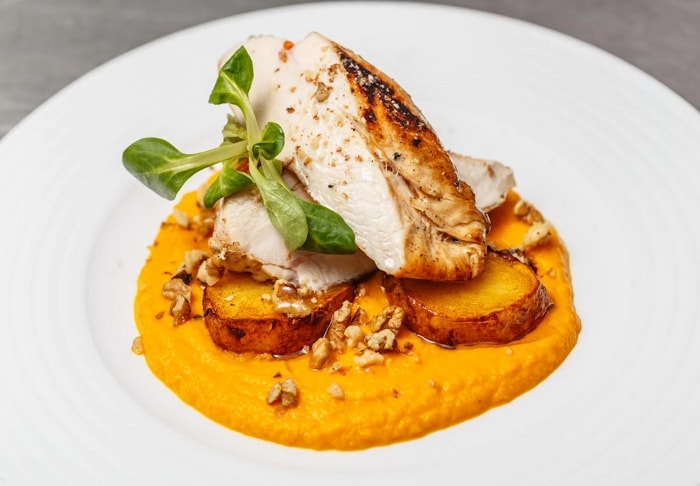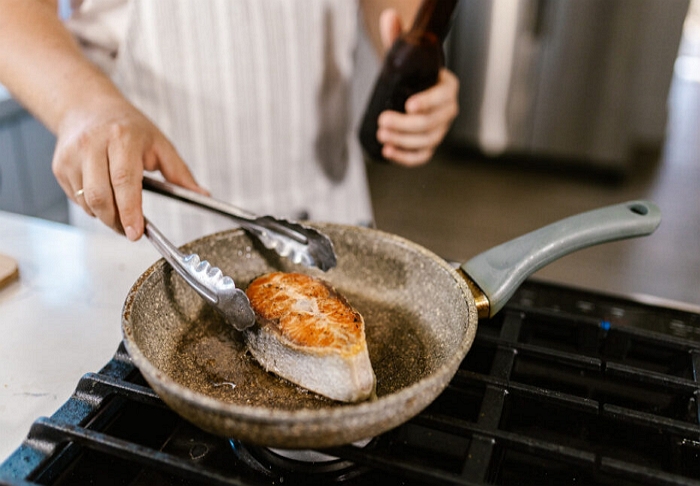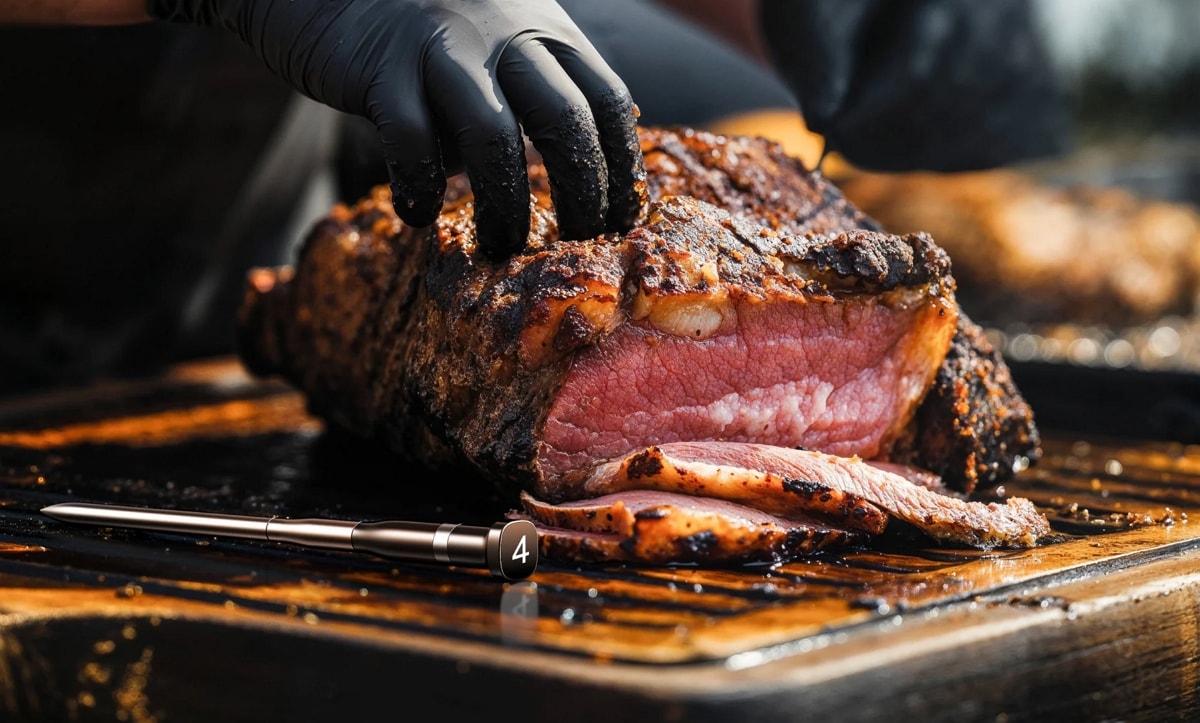Humans consume around 350 million tons of meat yearly –a fair proportion of that will be steak. If you love steak, you should know the correct steak temperatures are the key to the science behind a perfect steak.
While steak is simple to cook, the steak internal temperature – and time – you take to cook the meat can be the difference between a spectacular, soft cut of meat and something that tastes like leather.

To help you make sure that every steak you cook in the future is spectacular, we have put together a simple steak temp chart. On top of that, we provide tips for how to cook steak effectively and some crucial tips on getting the best out of every steak. From resting time to reverse-sear steak cooking, we cover everything you need to know to cook a stunning steak.
Let us start by looking at steak ‘doneness’ based on internal temperatures.
Contents:
Steak Doneness By Internal Temperature
Everyone has their preference when it comes to cooking steak. Some prefer bloody steak and almost raw (120°F-125°F); others prefer a well-done steak temp (160°F-165°F). It all comes down to personal preference, of course.
So, what steak temp should you be looking for? Use the guide below to help you cook your steak properly. Remember the above advice: do not let your steak sit on the grill/pan until it reaches maximum temperature. You risk going overboard and overcooking your steak by doing this. And remember grab the InstaProbe instant read thermometer to check the internal temperature for precision.
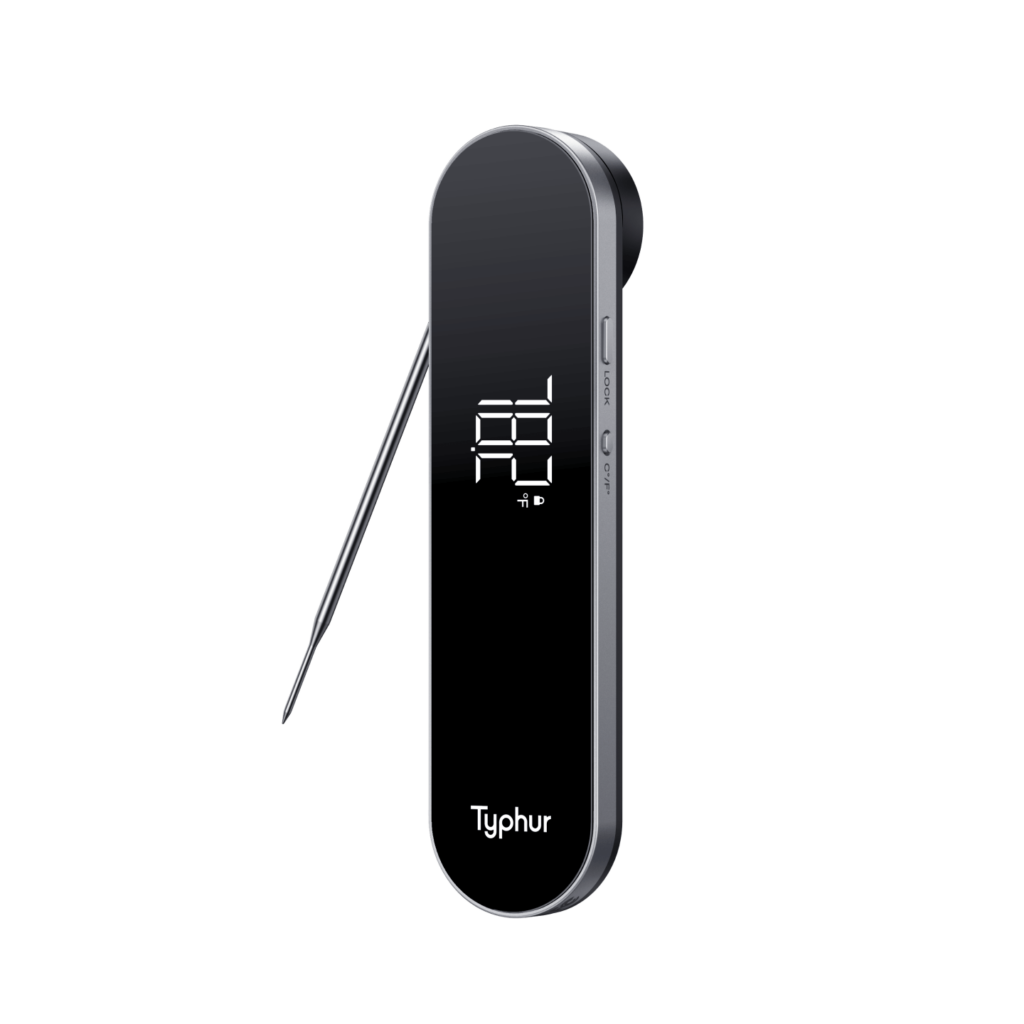
Instant Read Meat Thermometer
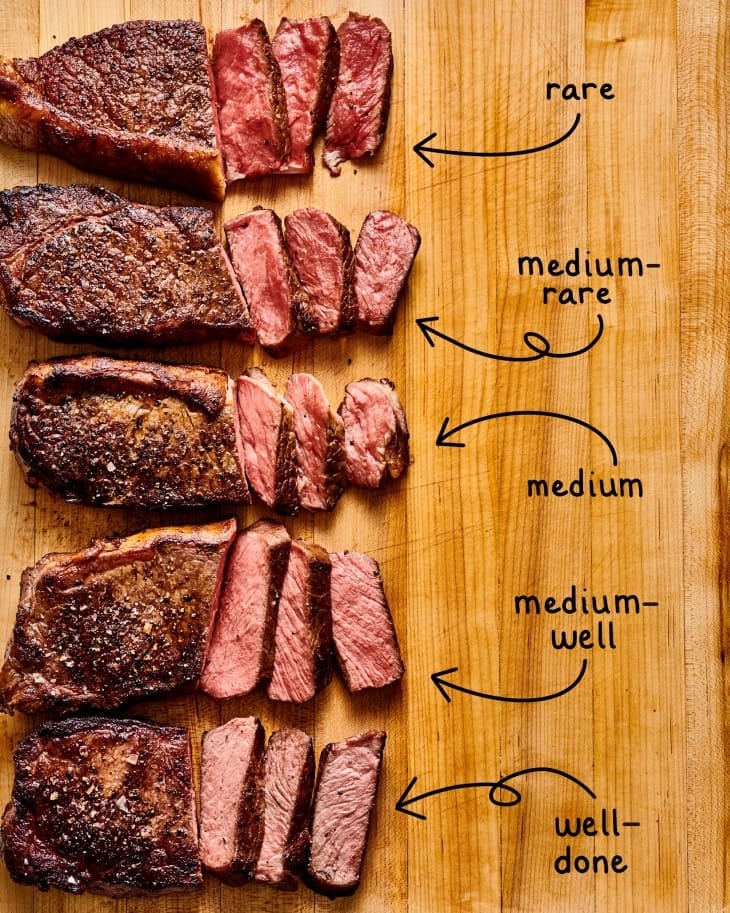
Rare Steak (120°F-125°F)
The typical rare steak temp to aim for will be in the region of 120°F-125°F. When you cut into that rare steak, it should still be nice and red on the inside. Another characteristic to focus on is that the steak should still be relatively cool in the middle. While you might be used to ensuring your meat is piping hot in the middle, rare steak is different. Cook each side of the steak for around 3-4 minutes.
The juice should also flow at this point, unlike more well-done steaks. The coolness might confuse you, but if the internal temperature reads 120°F, you are not taking any health risks. As mentioned above, be sure to lift your steak off the cooking source at 115°F instead of 120°F for the best results.
Medium Rare Steak (130°F-135°F)
The next steak temp on the list is Medium Rare. So, what temp is medium rare? The temperature for medium rare steak will be around 130°F-135°F. Medium rare steak will be dark pink on the outside and red on the inside. This is the ‘ideal’ blend of softness and taste for many. Medium rare is arguably the most popular steak done temp to use. Cook each side of the steak for around 5-7 minutes.
You should be looking to remove the steak at around 125°F, though, so that you can allow the steak to keep on cooking. Your ideal medium rare steak temperature will be 130°F, but some prefer to bring the steak to 130°F and then let the internal cooking reach the 135°F mark. Again, let it rest for a few moments.
Medium Steak (140°F-145°F)
When it comes to steak, medium is quite a rare choice. Most find that they prefer either medium rare or medium well. For lovers of this level, the medium steak temp you aim for is around 140°F-145°F. This will leave you with a steak still juicy and tender but not red in the middle. This will leave a pinkish hue instead of red, which will be nice and warm in the middle. Keep each side cooking for around 7-8 minutes.
Again, remove your medium steak at 135°F for the best overall results. This will guarantee you are left with a good level of ‘doneness’ for your steak without risking it being too raw or dry.
Medium Well Steak (150°F-155°F)
Medium-well is an increasingly common choice. For most, the medium well steak temperature will be between 150°F-155°F. This will leave you with a pinkish shade in the middle of the steak but very little coloring on the edge. As soon as your medium-well steak temperature hits the 145°F mark, we recommend you take it off the pan immediately. You should aim for around 8-9 minutes per side when cooking.
Medium-well steaks also need a bit more time to rest, so aim for five to ten minutes. This allows the internal cooking to finish and gives the medium-well steak the flavor you are searching for.
Well Done Steak (160°F-165°F)
When it comes to steak, the most controversial style is a well-done steak. For many, the well-done steak temp can be too much. Well-done steak spends the maximum time it can on the cooking element and needs to reach a temperature of 160°F-165°F.
However, you should remove the steak at 155°F. Ten minutes per side should be plenty when cooking a well-done steak. Overcooking a well-done steak is the easiest mistake to make, and it often results in an overly chewy and leathery piece of meat. Take your well-done steak off the cooking source once it reaches 155°F and then allow the steak to rest for a few minutes and finish the internal cooking process.
Steak Temperature Chart
You can quickly understand the temperature levels you should seek to reach using the steak temperature chart below.
| STEAK STYLE | TEMPERATURE (°F) | TEMPERATURE (°C) |
| Rare Steak | 120°F to 130°F | 49°C to 54°C |
| Medium-Rare Steak | 130°F to 135°F | 54°C to 57°C |
| Medium Steak | 135°F to 145°F | 57°C to 63°C |
| Medium-Well Steak | 145°F to 155°F | 63°C to 68°C |
| Well-Done Steak | 155°F and Above | 68°C and Above |
No matter what your preference is for steak, though, you should remember that you should remove the steak from cooking when it is around five degrees below the temperature you intend to cook at.
Why? Because a steak will continue to cook after it has been on the cooking source. For example, cooking a steak on a grill or a pan will continue to cook away on the inside. That is why getting the internal temperature just right is so important! This phenomenon is known as carryover cooking.
How to Check Steak Internal Temp
One of the more challenging elements of judging your ideal steak done temp is finding the internal temperature. You cannot rely upon the temperature you cook at—the temperature of the middle of the meat matters.
Way 1. Measuring Steak Doneness By Color: Should You?
When measuring how ready your steak is, many use an eye gauge test – they look at the color. This, though, is not how you measure the temperature of a steak. This is the easiest way to misjudge your cooking and go from, for example, a medium rare temp to a medium well steak temp.
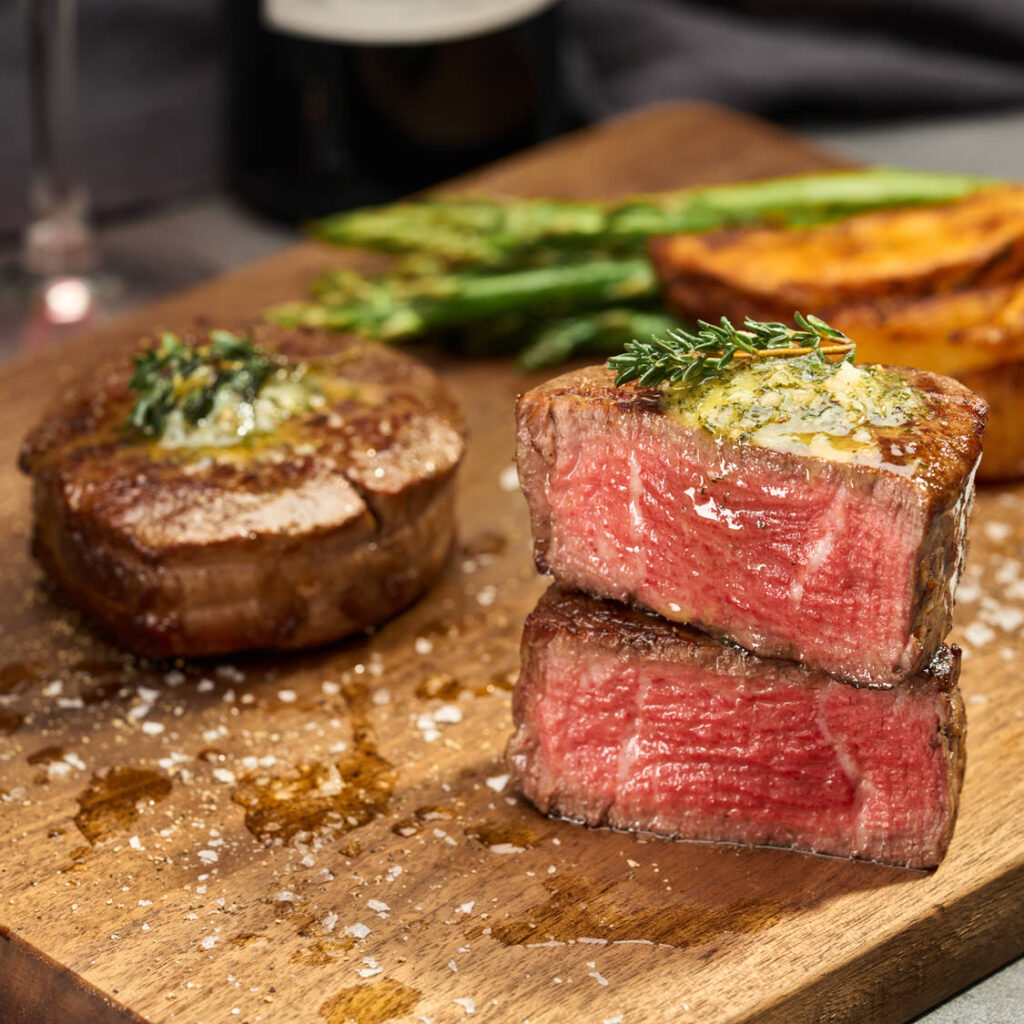
The reason why judging by color is not suitable is that color is subjective. Color is not even a good indicator of steak doneness – there is more to it than this. If a steak guide says that your steak should be ‘pink’ in the middle, then your opinion of pink might differ from my own.
Judging steak by color is the easiest way to either cook your steak to the wrong level of doneness or risk eating uncooked meat.
Way 2. Using a Meat Thermometer: The Correct Way To Check Steak Temperature
Since so many factors can change the color of steak without being related to cooking, your best bet to get the steak internal temp is to use a probe.
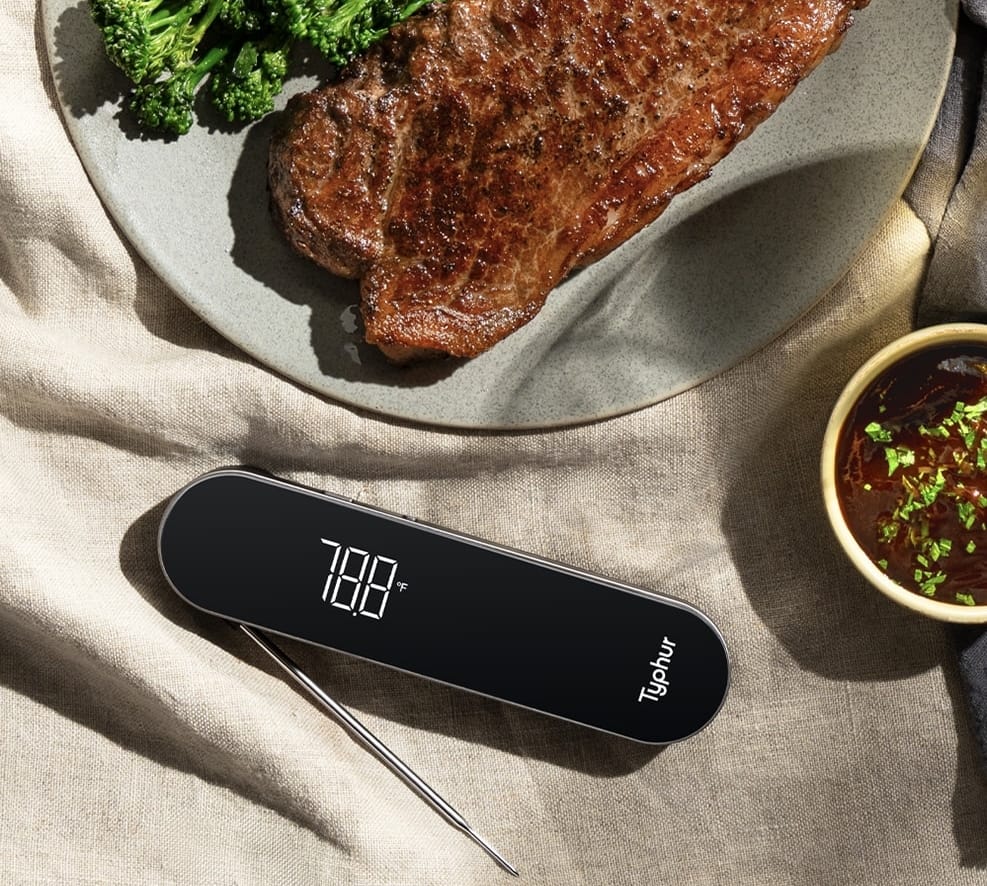
We recommend that you use a Typhur InstaProbe. This provides ±0.5°F (±0.3°C) accurate meat readings in .5s, so you can be sure your meat is 100% safe. And, crucially, so that you know your steak is cooked to the level that you wanted.
You may also like: What is precision cooking?.
During the cooking process, various meat sections will experience varying temperatures. To ensure an accurate reading with the InstaProbe, please insert the probe tip into the thickest portion of the meat from the top. Be mindful to avoid any visible bones or gristle for the best results.
Meanwhile, you can use IntaProbe to check your burger temp, and shrimp temp to know if is done. It is your must-have kitchen tool!
The Importance of Resting Your Steak
During this steak temperature guide, we have frequently mentioned the importance of resting your steak. Why? Resting your steak helps bring the flavor and quality of the meat to the fore. Resting your steak allows the steak to help retain its juice, too. If you cut into a searing hot piece of steak, the juice will flow out like a burst dam. This leaves the rest of the meat dry and less enjoyable.
Resting your steak allows for everything to relax. The result is a juicier, more tender piece of meat. Resting a steak is essential if you want that restaurant-quality taste and flavor from each bite.
How long should you rest a steak for? Typically, we recommend resting your steak for half the cooking time.
Reverse-Sear Steak Cooking Method
Now that you better understand steak doneness temperatures, we want to look at a slightly more advanced method: reverse-sear steak cooking.
Reverse searing has become very popular, and for good reason. This works by cooking your steak temp at a much lower heat. You cook at a much lower temperature and then give it a quick sear at the high heat suggested for that particular steak temp once it has been cooked. To reverse sear, you begin by:
- Set your grill/pan to a 225°F heat. Then, you close over the grill/cover the pan and let it set for around 15 minutes;
- Now, take the steaks and start cooking them – place the internal temperature probe on immediately;
- Once the steaks reach around 110°F-115°F – this can take a lot of time, depending on how thick your cut of meat is;
- Now, take the steaks off the grill and bring the temperature of your grill/pan to around 450°F. Pre-heat this for around 10 minutes and put the steaks back on the grill;
- You will see the steaks begin to sizzle and brown very quickly. Allow them to cook until they are brown on the outside and the temperature is around 3°F below your desired doneness.
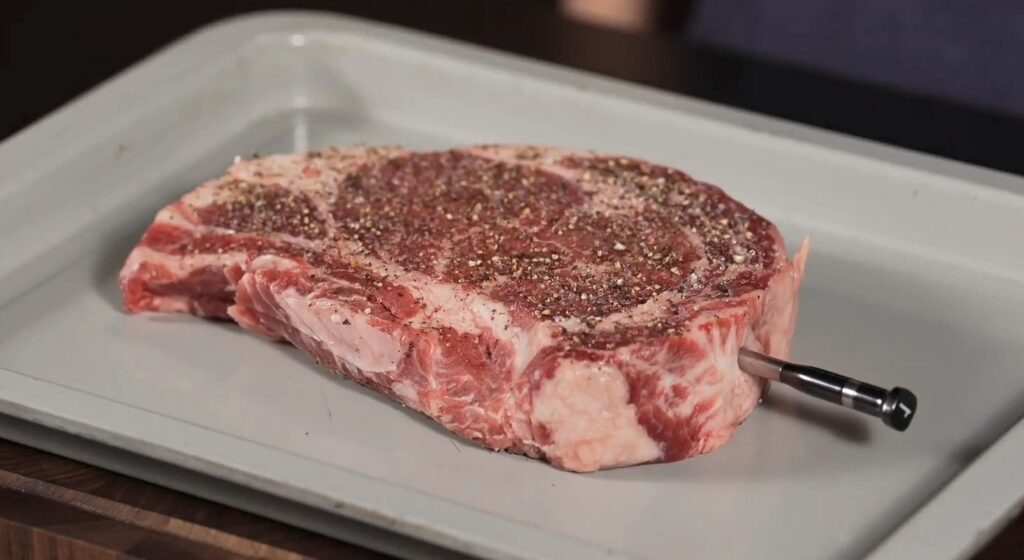
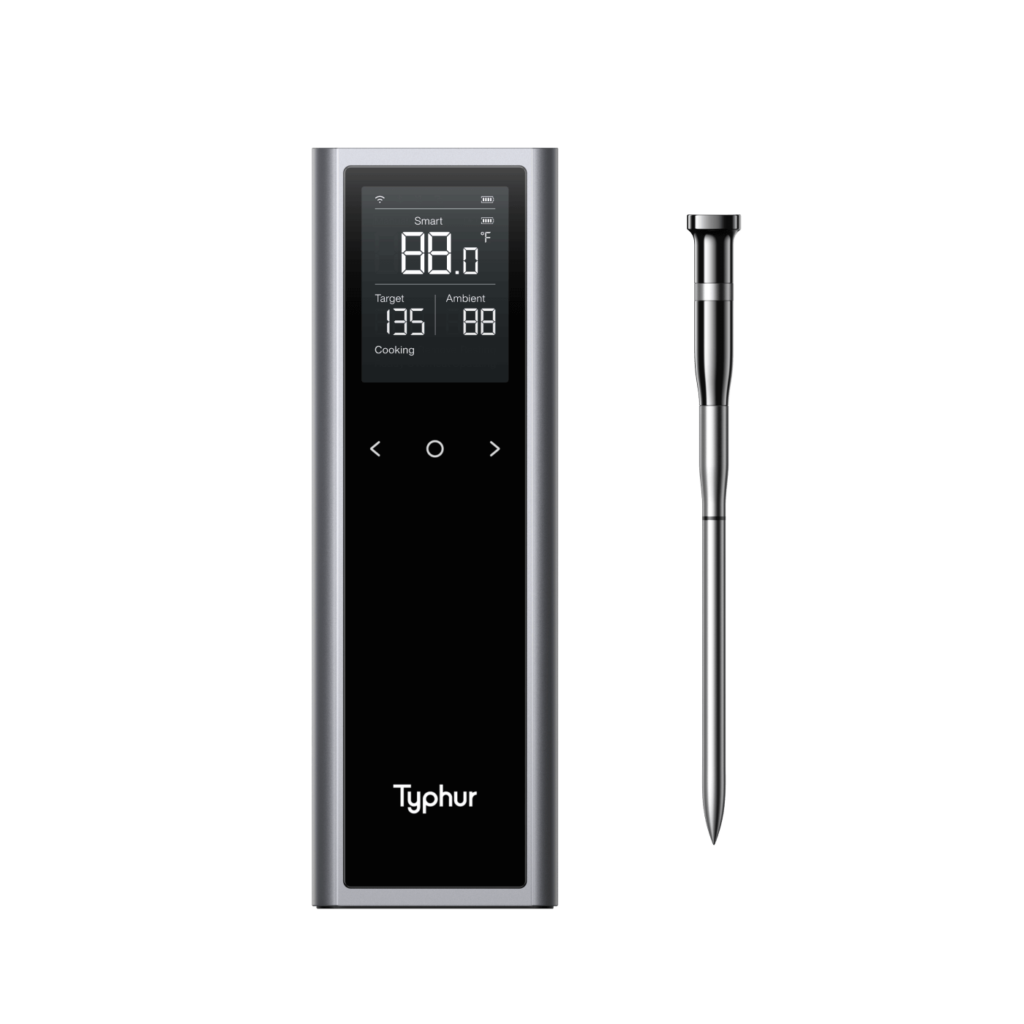
Bluetooth and WiFi Meat Thermometer
This should leave you with a very different kind of steak. It can drastically change the taste, flavor, and texture of the meat. We recommend that anyone who has used our steak temperature guidance try this out: the results can be pretty spectacular. Good luck, and enjoy your steak being perfectly cooked to your desired steak done temp from now!


